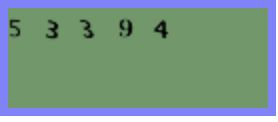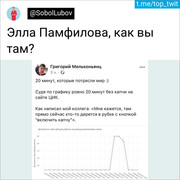Este artículo tratará sobre este matiz.
Ejecuto selenium como de costumbre, y después del primer clic en el enlace donde se encuentra la tabla requerida con los resultados de las elecciones de la República de Tartaristán, se bloquea

Como comprenderá, el matiz radica en el hecho de que después de cada clic en el enlace, aparece un captcha.
Después de analizar la estructura del sitio, se encontró que el número de enlaces alcanza alrededor de 30 mil.
No tuve más remedio que buscar en Internet formas de reconocer el captcha. Encontré un servicio
+ Captcha se reconoce al 100%, al igual que una persona
- El tiempo promedio de reconocimiento es de 9 segundos, lo cual es muy largo, ya que tenemos alrededor de 30 mil enlaces diferentes en los que debemos ir y reconocer el captcha.
Inmediatamente desistí de esta idea. Después de varios intentos de obtener el captcha, noté que no cambia mucho, todos los mismos números negros sobre un fondo verde.
Y como hace mucho que quería tocar la "computadora de visión" con mis manos, decidí que tenía una gran oportunidad de probar yo mismo el problema MNIST favorito de todos.
Ya eran las 17:00 en el reloj y comencé a buscar modelos previamente entrenados para reconocer números. Después de verificarlos en este captcha, la precisión no me satisfizo; bueno, es hora de recopilar imágenes y entrenar su red neuronal.
Primero, debe recopilar una muestra de entrenamiento.
Abro el controlador web de Chrome y visualizo 1000 captchas en mi carpeta.
from selenium import webdriver
i = 1000
driver = webdriver.Chrome('/Users/aleksejkudrasov/Downloads/chromedriver')
while i>0:
driver.get('http://www.vybory.izbirkom.ru/region/izbirkom?action=show&vrn=4274007421995®ion=27&prver=0&pronetvd=0')
time.sleep(0.5)
with open(str(i)+'.png', 'wb') as file:
file.write(driver.find_element_by_xpath('//*[@id="captchaImg"]').screenshot_as_png)
i = i - 1Como solo tenemos dos colores, convertí nuestros captchas a bw:
from operator import itemgetter, attrgetter
from PIL import Image
import glob
list_img = glob.glob('path/*.png')
for img in list_img:
im = Image.open(img)
im = im.convert("P")
im2 = Image.new("P",im.size,255)
im = im.convert("P")
temp = {}
#
for x in range(im.size[1]):
for y in range(im.size[0]):
pix = im.getpixel((y,x))
temp[pix] = pix
if pix != 0:
im2.putpixel((y,x),0)
im2.save(img)
Ahora tenemos que cortar nuestros captchas en números y convertirlos en un tamaño único de 10 * 10.
Primero, cortamos el captcha en números, luego, dado que el captcha se desplaza a lo largo del eje OY, necesitamos recortar todo lo innecesario y rotar la imagen 90 °.
def crop(im2):
inletter = False
foundletter = False
start = 0
end = 0
count = 0
letters = []
name_slise=0
for y in range(im2.size[0]):
for x in range(im2.size[1]):
pix = im2.getpixel((y,x))
if pix != 255:
inletter = True
# OX
if foundletter == False and inletter == True:
foundletter = True
start = y
# OX
if foundletter == True and inletter == False:
foundletter = False
end = y
letters.append((start,end))
inletter = False
for letter in letters:
#
im3 = im2.crop(( letter[0] , 0, letter[1],im2.size[1] ))
# 90°
im3 = im3.transpose(Image.ROTATE_90)
letters1 = []
#
for y in range(im3.size[0]): # slice across
for x in range(im3.size[1]): # slice down
pix = im3.getpixel((y,x))
if pix != 255:
inletter = True
if foundletter == False and inletter == True:
foundletter = True
start = y
if foundletter == True and inletter == False:
foundletter = False
end = y
letters1.append((start,end))
inletter=False
for letter in letters1:
#
im4 = im3.crop(( letter[0] , 0, letter[1],im3.size[1] ))
#
im4 = im4.transpose(Image.ROTATE_270)
resized_img = im4.resize((10, 10), Image.ANTIALIAS)
resized_img.save(path+name_slise+'.png')
name_slise+=1
“Ya es hora, 18:00, es hora de terminar este problema”, pensé, esparciendo los números en las carpetas con sus números por el camino.
Declaramos un modelo simple que acepta una matriz expandida de nuestra imagen como entrada.
Para hacer esto, cree una capa de entrada de 100 neuronas, ya que el tamaño de la imagen es 10 * 10. Como capa de salida hay 10 neuronas, cada una de las cuales corresponde a un dígito del 0 al 9.
from tensorflow.keras import Sequential
from tensorflow.keras.layers import Conv2D, MaxPooling2D, Flatten, Dense, Dropout, Activation, BatchNormalization, AveragePooling2D
from tensorflow.keras.optimizers import SGD, RMSprop, Adam
def mnist_make_model(image_w: int, image_h: int):
# Neural network model
model = Sequential()
model.add(Dense(image_w*image_h, activation='relu', input_shape=(image_h*image_h)))
model.add(Dense(10, activation='softmax'))
model.compile(loss='categorical_crossentropy', optimizer=RMSprop(), metrics=['accuracy'])
return model
Dividimos nuestros datos en conjuntos de prueba y entrenamiento:
list_folder = ['0','1','2','3','4','5','6','7','8','9']
X_Digit = []
y_digit = []
for folder in list_folder:
for name in glob.glob('path'+folder+'/*.png'):
im2 = Image.open(name)
X_Digit.append(np.array(im2))
y_digit.append(folder)Lo dividimos en entrenamiento y set de prueba:
from sklearn.model_selection import train_test_split
X_Digit = np.array(X_Digit)
y_digit = np.array(y_digit)
X_train, X_test, y_train, y_test = train_test_split(X_Digit, y_digit, test_size=0.15, random_state=42)
train_data = X_train.reshape(X_train.shape[0], 10*10) # 100
test_data = X_test.reshape(X_test.shape[0], 10*10) # 100
# 10
num_classes = 10
train_labels_cat = keras.utils.to_categorical(y_train, num_classes)
test_labels_cat = keras.utils.to_categorical(y_test, num_classes)
Entrenamos al modelo.
Seleccione empíricamente los parámetros del número de épocas y el tamaño del "lote":
model = mnist_make_model(10,10)
model.fit(train_data, train_labels_cat, epochs=20, batch_size=32, verbose=1, validation_data=(test_data, test_labels_cat))
Guardamos los pesos:
model.save_weights("model.h5")
La precisión en la undécima época resultó ser excelente: precisión = 1.0000. Satisfecho, me voy a casa a descansar a las 19:00, mañana todavía necesito escribir un analizador para recopilar información del sitio web de la CCA.
Mañana al día siguiente.
El asunto quedó pequeño, queda recorrer todas las páginas del sitio web de la CCA y recoger los datos:
Cargar los pesos del modelo entrenado:
model = mnist_make_model(10,10)
model.load_weights('model.h5')
Escribimos una función para guardar el captcha:
def get_captcha(driver):
with open('snt.png', 'wb') as file:
file.write(driver.find_element_by_xpath('//*[@id="captchaImg"]').screenshot_as_png)
im2 = Image.open('path/snt.png')
return im2
Escribamos una función para la predicción de captcha:
def crop_predict(im):
list_cap = []
im = im.convert("P")
im2 = Image.new("P",im.size,255)
im = im.convert("P")
temp = {}
for x in range(im.size[1]):
for y in range(im.size[0]):
pix = im.getpixel((y,x))
temp[pix] = pix
if pix != 0:
im2.putpixel((y,x),0)
inletter = False
foundletter=False
start = 0
end = 0
count = 0
letters = []
for y in range(im2.size[0]):
for x in range(im2.size[1]):
pix = im2.getpixel((y,x))
if pix != 255:
inletter = True
if foundletter == False and inletter == True:
foundletter = True
start = y
if foundletter == True and inletter == False:
foundletter = False
end = y
letters.append((start,end))
inletter=False
for letter in letters:
im3 = im2.crop(( letter[0] , 0, letter[1],im2.size[1] ))
im3 = im3.transpose(Image.ROTATE_90)
letters1 = []
for y in range(im3.size[0]):
for x in range(im3.size[1]):
pix = im3.getpixel((y,x))
if pix != 255:
inletter = True
if foundletter == False and inletter == True:
foundletter = True
start = y
if foundletter == True and inletter == False:
foundletter = False
end = y
letters1.append((start,end))
inletter=False
for letter in letters1:
im4 = im3.crop(( letter[0] , 0, letter[1],im3.size[1] ))
im4 = im4.transpose(Image.ROTATE_270)
resized_img = im4.resize((10, 10), Image.ANTIALIAS)
img_arr = np.array(resized_img)/255
img_arr = img_arr.reshape((1, 10*10))
list_cap.append(model.predict_classes([img_arr])[0])
return ''.join([str(elem) for elem in list_cap])
Agregue una función que descargue la tabla:
def get_table(driver):
html = driver.page_source #
soup = BeautifulSoup(html, 'html.parser') # " "
table_result = [] #
tbody = soup.find_all('tbody') #
list_tr = tbody[1].find_all('tr') #
ful_name = list_tr[0].text #
for table in list_tr[3].find_all('table'): #
if len(table.find_all('tr'))>5: #
for tr in table.find_all('tr'): #
snt_tr = []#
for td in tr.find_all('td'):
snt_tr.append(td.text.strip())#
table_result.append(snt_tr)#
return (ful_name, pd.DataFrame(table_result, columns = ['index', 'name','count']))
Recopilamos todos los enlaces del 13 de septiembre:
df_table = []
driver.get('http://www.vybory.izbirkom.ru')
driver.find_element_by_xpath('/html/body/table[2]/tbody/tr[2]/td/center/table/tbody/tr[2]/td/div/table/tbody/tr[3]/td[3]').click()
html = driver.page_source
soup = BeautifulSoup(html, 'html.parser')
list_a = soup.find_all('table')[1].find_all('a')
for a in list_a:
name = a.text
link = a['href']
df_table.append([name,link])
df_table = pd.DataFrame(df_table, columns = ['name','link'])
A las 13:00, termino de escribir el código con un recorrido de todas las páginas:
result_df = []
for index, line in df_table.iterrows():#
driver.get(line['link'])#
time.sleep(0.6)
try:#
captcha = crop(get_captcha(driver))
driver.find_element_by_xpath('//*[@id="captcha"]').send_keys(captcha)
driver.find_element_by_xpath('//*[@id="send"]').click()
time.sleep(0.6)
true_cap(driver)
except NoSuchElementException:#
pass
html = driver.page_source
soup = BeautifulSoup(html, 'html.parser')
if soup.find('select') is None:#
time.sleep(0.6)
html = driver.page_source
soup = BeautifulSoup(html, 'html.parser')
for i in range(len(soup.find_all('tr'))):#
if '\n \n' == soup.find_all('tr')[i].text:# ,
rez_link = soup.find_all('tr')[i+1].find('a')['href']
driver.get(rez_link)
time.sleep(0.6)
try:
captcha = crop(get_captcha(driver))
driver.find_element_by_xpath('//*[@id="captcha"]').send_keys(captcha)
driver.find_element_by_xpath('//*[@id="send"]').click()
time.sleep(0.6)
true_cap(driver)
except NoSuchElementException:
pass
ful_name , table = get_table(driver)#
head_name = line['name']
child_name = ''
result_df.append([line['name'],line['link'],rez_link,head_name,child_name,ful_name,table])
else:# ,
options = soup.find('select').find_all('option')
for option in options:
if option.text == '---':#
continue
else:
link = option['value']
head_name = option.text
driver.get(link)
try:
time.sleep(0.6)
captcha = crop(get_captcha(driver))
driver.find_element_by_xpath('//*[@id="captcha"]').send_keys(captcha)
driver.find_element_by_xpath('//*[@id="send"]').click()
time.sleep(0.6)
true_cap(driver)
except NoSuchElementException:
pass
html2 = driver.page_source
second_soup = BeautifulSoup(html2, 'html.parser')
for i in range(len(second_soup.find_all('tr'))):
if '\n \n' == second_soup.find_all('tr')[i].text:
rez_link = second_soup.find_all('tr')[i+1].find('a')['href']
driver.get(rez_link)
try:
time.sleep(0.6)
captcha = crop(get_captcha(driver))
driver.find_element_by_xpath('//*[@id="captcha"]').send_keys(captcha)
driver.find_element_by_xpath('//*[@id="send"]').click()
time.sleep(0.6)
true_cap(driver)
except NoSuchElementException:
pass
ful_name , table = get_table(driver)
child_name = ''
result_df.append([line['name'],line['link'],rez_link,head_name,child_name,ful_name,table])
if second_soup.find('select') is None:
continue
else:
options_2 = second_soup.find('select').find_all('option')
for option_2 in options_2:
if option_2.text == '---':
continue
else:
link_2 = option_2['value']
child_name = option_2.text
driver.get(link_2)
try:
time.sleep(0.6)
captcha = crop(get_captcha(driver))
driver.find_element_by_xpath('//*[@id="captcha"]').send_keys(captcha)
driver.find_element_by_xpath('//*[@id="send"]').click()
time.sleep(0.6)
true_cap(driver)
except NoSuchElementException:
pass
html3 = driver.page_source
thrid_soup = BeautifulSoup(html3, 'html.parser')
for i in range(len(thrid_soup.find_all('tr'))):
if '\n \n' == thrid_soup.find_all('tr')[i].text:
rez_link = thrid_soup.find_all('tr')[i+1].find('a')['href']
driver.get(rez_link)
try:
time.sleep(0.6)
captcha = crop(get_captcha(driver))
driver.find_element_by_xpath('//*[@id="captcha"]').send_keys(captcha)
driver.find_element_by_xpath('//*[@id="send"]').click()
time.sleep(0.6)
true_cap(driver)
except NoSuchElementException:
pass
ful_name , table = get_table(driver)
result_df.append([line['name'],line['link'],rez_link,head_name,child_name,ful_name,table])
Y luego viene el tweet que cambió mi vida
